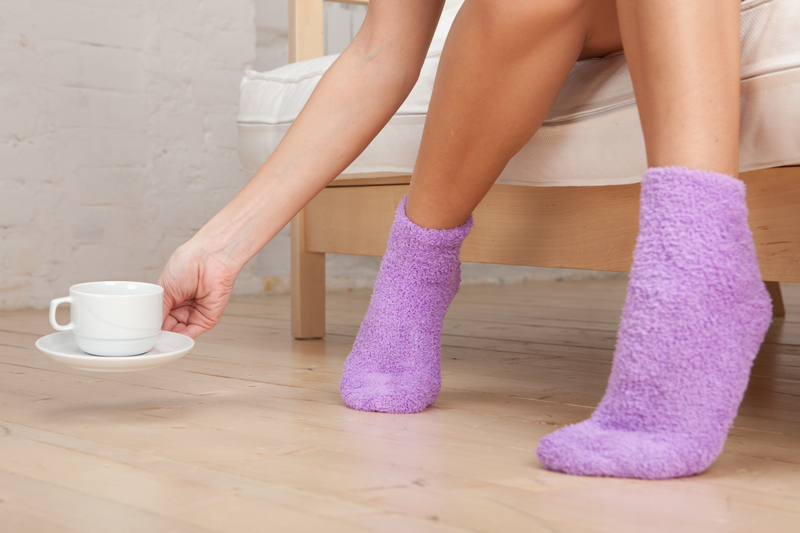Grease-Free Enamel Oven Trays: The Uncomplicated Method
Posted on 16/06/2025
Grease-Free Enamel Oven Trays: The Uncomplicated Method
Are you tired of scrubbing stubborn grease from your oven trays? Do you wish for a stress-free, effortless method to keep your enamel oven trays spotless and hygienic? You've come to the right place! In this comprehensive guide, we'll break down the uncomplicated method for achieving--and maintaining--sparkling, grease-free enamel oven trays. Let's delve into practical tips, care guidelines, and expert insights that will revolutionize your kitchen cleaning routine.

Why Enamel Oven Trays are a Game Changer
Enamel oven trays have swiftly become a staple in modern kitchens, celebrated for their durability, sleek aesthetics, and resistance to sticking and staining. But what truly sets them apart is their capacity to support grease-free baking--when cleaned and cared for correctly.
- Non-Stick Properties: Enamel coatings provide a smooth, non-porous surface that minimizes food residue and grease buildup.
- Hygienic: Unlike older metal trays, enamel doesn't harbor bacteria or odors.
- Versatility: Ideal for roasting, baking, and grilling, making them a true multipurpose kitchen asset.
- Effortless Cleaning: Their unique finish allows for easy grease removal with minimal scrubbing required.
If you wish to maximize these advantages, understanding the correct grease-free cleaning technique for enamel oven trays is essential.
The Science Behind Grease-Free Enamel Oven Trays
The secret behind the long-lasting shine of enamel oven trays lies in their construction. A core of carbon steel or cast iron is coated with a layer of glassy enamel, forming an impervious surface. This enamel layer resists acids, stains, and--most importantly--grease penetration.
- Non-porous Surface: Keeps grease from sinking in, making cleaning easier and more effective.
- Heatproof Finish: The enamel can tolerate high baking and grilling temperatures without warping or degrading.
- Inert and Safe: Enamel doesn't react with acidic foods, ensuring no flavors or fumes are transferred.
But even with these advanced properties, improper cleaning methods or misuse can lead to stubborn residue and a diminishing non-stick quality. That's where the uncomplicated method comes into play.
The Uncomplicated Method: Step-By-Step Guide to Grease-Free Trays
Preparation: Quick Pre-Clean Steps
- Let the tray cool: Never pour cold water on a hot enamel tray. Sudden temperature changes can crack the enamel.
- Remove loose debris: Use a plastic spatula or soft brush to sweep away crumbs and larger bits of food.
Step 1: The Gentle Soak
- Fill your sink or tub with warm water (not boiling) and a few drops of dishwashing liquid that cuts grease.
- Submerge the enamel tray completely. Let it soak for 20-30 minutes. This softens baked-on grease without harsh abrasives.
Step 2: Non-Abrasive Scrubbing
- Use a soft sponge or microfiber cloth. Avoid steel wool or rough pads, which can scratch or dull the enamel.
- Lightly buff away loosened grease, focusing on corners and edges where grime often collects.
- For tough spots, apply a paste of baking soda and water. Let it sit for 10 minutes, then gently scrub and rinse.
Step 3: The Final Rinse
- Rinse the enamel tray thoroughly with warm water to remove all traces of detergent and residue.
- Dry with a lint-free towel or allow to air dry on a rack.
Step 4: Finishing Touches
- For extra shine and a grease-free finish, wipe the surface with a small amount of white vinegar on a soft cloth.
- Store the tray in a dry place to avoid moisture stains or odor buildup.
Why This Method Works: The Chemistry of Clean
This simple and effective process leverages a few scientific principles:
- Soap molecules break down grease, making it water-soluble so it lifts away easily.
- Baking soda is a mild alkali and gentle abrasive, dissolving stuck-on food without harming the enamel.
- Vinegar as a final rinse neutralizes any remaining soap residue, leaving a streak-free, polished surface.
The result? Spotless, grease-free enamel oven trays that look as good as new--every time!
Common Mistakes to Avoid When Cleaning Enamel Oven Trays
- Avoid abrasive scourers: Scratching the enamel not only affects appearance but lessens its non-stick power.
- Say no to harsh chemicals: Products like oven cleaner, bleach, or ammonia can corrode the enamel coating, leading to discoloration and flaking.
- Never use metal utensils: These can chip or crack the enamel, creating crevices where grease can settle.
- Don't soak forever: Extended soaking (over a few hours) can attack seams or joints where enamel meets metal.
- Skip the dishwasher (sometimes): Dishwashers can be rough on enamel trays, especially if you use heated drying cycles and harsh detergents. Hand washing preserves enamel longevity.
Advanced Tips to Maintain Grease-Free Enamel Oven Trays
Routine Upkeep
- Line with baking parchment paper or silicone mats during roasting or baking. This forms a barrier between food and tray, further reducing the need for intensive cleaning.
- Develop a habit of immediate soaking after use--don't allow grease to harden or carbonize on the enamel surface.
- Wipe down trays after use, even if they look clean, to remove invisible grease films.
Deep Cleaning for Enamel Oven Trays
- Once a month, perform a deep clean by spreading a thin layer of baking soda across the surface, spritzing with vinegar. Let bubble, then thoroughly rinse and dry.
- If your tray smells after cooking particularly fatty foods, sprinkle coarse salt and rub gently with a lemon half. This method helps deodorize and lift residue.
FAQs: Grease-Free Enamel Oven Trays
How often should I deep clean my enamel oven trays?
It depends on usage. For regular bakers or roasters, a monthly deep clean is ideal. For light use, every 2-3 months will suffice, alongside daily gentle cleaning.
Can I use my enamel tray on the hob or under the grill?
Most modern enamel oven trays are oven and grill safe but not suitable for direct hob use, as thermal shock can crack the enamel. Always check the manufacturer guidelines.
What should I do if my tray becomes stained?
Stubborn stains can be treated with a paste of baking soda and a splash of hydrogen peroxide, left on the stain for 30 minutes, then gently wiped away.
Is it normal for enamel trays to lose shine over time?
Mild dullness is inevitable with age and heavy use. Regular vinegar polishing will restore much of the shine. Avoid dishwashers and abrasives to maximize life and luster.
Eco-Friendly Solutions for Grease-Free Enamel Oven Tray Cleaning
Environmentally conscious home cooks will appreciate that the uncomplicated method is also eco-friendly:
- No toxic chemicals. Only mild soap, baking soda, and vinegar are needed.
- Reduced water use compared to repeated scrubbing or boiling methods.
- Longer-lasting trays mean less landfill waste and lower environmental impact.
Simple, sustainable, and safe for your family--what's not to love?
Comparing Enamel Oven Trays to Other Tray Types
- Aluminum Trays: Prone to staining, warping, and often require plenty of greasing to prevent sticking.
- Stainless Steel: Durable but not non-stick. Food often sticks and burns onto steel surfaces.
- Non-Stick Coated: Effective initially, but coatings can wear or flake, raising health concerns. Not as robust as enamel.
- Ceramic: Attractive and fairly non-stick, but more fragile than enamel trays.
Enamel oven trays stand out for their balance of strength, appearance, and ease of achieving that coveted grease-free, hassle-free clean.
Best Practices for Cooking Grease-Free with Enamel Oven Trays
Minimize Grease Production
- Trim excess fat from meat before roasting.
- Use racks within the tray to allow fat to drip away.
- Bake at the recommended temperature to avoid splatters.
Enhance Natural Non-Stick Abilities
- Preheat the tray in the oven before adding food--this helps create an instant sear and less sticking.
- Lightly oil only when necessary. Enamel trays rarely need spraying, but for baking delicate items, a slight brush of oil does wonders.

Extending the Life of Your Enamel Oven Tray
- Never stack heavier pans on or in the tray.
- Do not cut food directly on the enamel surface--blades may chip the coating.
- Store in a dry location to prevent rust where there is exposed steel on older trays.
With correct care, a quality enamel oven tray will serve you beautifully for decades!
The Takeaway: Uncomplicated Grease-Free Enamel Oven Trays
Keeping your enamel oven trays completely grease-free need not be a chore. By following the uncomplicated steps outlined above, you guarantee a hygienic, sparkling tray every time you bake or roast. Remember, the key is prevention and gentle cleaning--ditch harsh scrubbing, avoid caustic chemicals, and rely on simple, time-tested kitchen staples for a stress-free experience.
- Fast, effective, environmentally safe.
- Your grease-free enamel oven trays will look fabulous meal after meal!
Ready to give your enamel oven trays the royal treatment? Try the uncomplicated method today and discover the joy of effortless kitchen cleaning. For more tips and detailed reviews, follow our blog and never miss a post!





